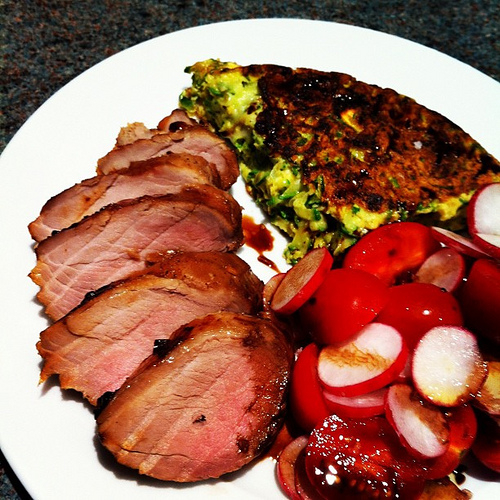Eating Paleo: The best diet that's the hardest
The Paleolithic Diet (sometimes called "the caveman diet") is suffering from some image problems at the moment, which is too bad, because it's probably the healthiest diet out there. Unfortunately, Paleo eaters can be an annoying bunch; I should know, because I am one. The combination of starry-eyed zealotry and pseudoscientific explanations is almost too much to bear at times.
The Paleo diet began in 1975 when a gastroenterologist named Walter L Voegtlin published a book called The Stone Age Diet. It collected the strict dietary recommendations he had developed over the years for his clients with digestive problems like Crohn's Disease, colitis, irritable bowel syndrome and so forth. Voegtlin framed this diet as being "what our ancestors ate." But that's just a story Voegtlin told, and it has little scientific validity.
We are omnivores who evolved to digest just about anything, be it a plump insect grub or a bag of Flamin' Hot Cheetos. This is a simple fact. You can tell that your body digests Cheetos because - not to put too fine a point on it - they go in as Cheetos and come out as poop. But just because you CAN eat Cheetos it doesn't mean that you SHOULD.
I urge you to ignore all the claptrap mock-evolutionary biology "foundation" for the Paleo Diet. Instead, think of it as "Michael Pollan To The Max."
After all, Pollan, for all of his wisdom, is not a nutritionist. He also - notably - does not have a weight problem. It's easy to urge people to eat real butter if you have always been height-weight proportionate. For those of us seeking to lose weight or improve our health - for most Americans, in other words - Pollan's advice will lead you far astray. According to Pollan's rules, a hand-made apple pie in a crust baked from scratch is fine, but a Hostess Fruit Pie is not. But in reality, most of us shouldn't eat either of those things.
That's where the "hardest diet" thing comes in. I recently read a review of the top 20 diets that are the most difficult to follow. The Paleo diet came up on top on both counts. Make no mistake: compared to the typical American diet, this one is extreme. But unlike every other extreme diet, it is also really healthy.
Here is what you eat on the Paleo diet: fresh fruit and vegetables, nuts, meat and fish. No sugar, dairy, or processed foods allowed. No corn or wheat, although most Paleo experts have decided that (contrary to the original dietary rules) brown rice, wild rice, and potatoes are probably alright in small amounts.
From a practical perspective, here is how I plan a Paleo meal: first, I pick the meat, then the vegetables to pair with it, and finally some fruit on the side for afterward. (I still cannot bring myself to call a banana and some raspberries "dessert.") Let's say I decide to pan roast some lean pork loin. I happen to have carrots and zucchini on hand, so I'll give both of those a quick sear in the pan while the pork loin is resting. A handful of fruit at the end, and there you go. Simple as can be, delicious (compared to other diet food like those gritty shakes or dehydrated "brownies"), fresh and healthy.
The most important thing about following the Paleo diet - any diet, really - is to get as much variety as possible. And don't take it too seriously. Allow yourself some wiggle room; you're only human. Just eating one Paleo-approved meal per day is a great start, and a great way to reap the nutritional benefits without having to go completely over the top about it.
I've been half-assing the Paleo diet for about a month now, and I can really see the difference: I feel better, my energy is up, my skin looks better, and I have even lost a few pounds. Don't let the zealots put you off - if you're interested in improving your health, you should definitely give it a try.
Image courtesy of Flickr/Manne
